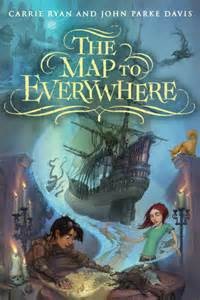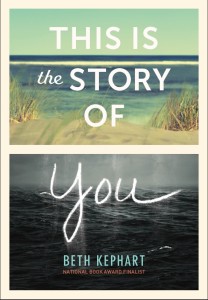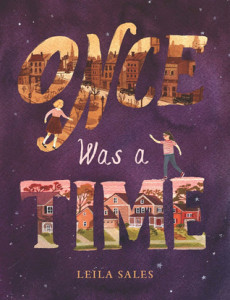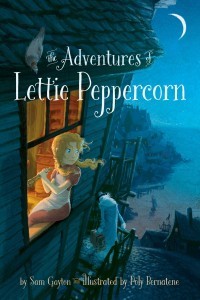Today I’m thrilled to be taking part in a blog tour for Once Was a Time by Leila Sales (see my book review posted yesterday). As part of the tour I am interviewing the author, and I have one copy of the book to give away. This is a great book for mother-daughter book clubs or readers aged 9 to 12. To enter, please leave a comment below about something you appreciate about a friend. Comment by midnight (PDT), April 21 for a chance to win (U.S. and Canadian addresses only please). Please note: The giveaway is closed. Congratulations to April on winning.
Here’s where you can find the next stops on the tour:
Friday—Laurisa White Reyes
Saturday—The Book Cellar
Sunday—Good Books & Good Wine
Monday—Novel Novice
Tuesday—Kid Lit Frenzy
Leila Sales is the author of many critically acclaimed young adult novels, including Tonight the Streets Are Ours and This Song Will Save Your Life. She lives in Brooklyn, New York. Visit LeilaSales.com for more information. Here’s what she has to say to readers at Mother Daughter Book Club. com.

Leila Sales photo by Franck Goldberg
What do you think are some of the biggest challenges of writing for young readers?
LS: I mean, writing is hard. It just is. You have to figure out what you’re trying to say, and how to say it. You have to make yourself sit down, with nothing but your own thoughts, and produce something original. And for young readers especially, you can’t get away with writing that is boring or meandering.
What do like most about it?
LS: The books that I read when I was young informed the person I am today. When you fall in love with a book as a child, you re-read it and re-read it, and it becomes a part of who you are and how you view the world. It’s extraordinary to think that my work could have that sort of impact on kids today.
When Lottie travels through time, she ends up getting help from a librarian. What’s your own take on the role of libraries and librarians these days?
LS: Libraries are the best. I’ve never been in as dire straits as Lottie—alone and unprepared, in a foreign country and time—but like Lottie, when I have been in turmoil, libraries have often come to my aid. I even used to dream of living in the library, as Lottie does for a little while. I had a whole plan in place for running away to the library and never leaving.
I worry that many people, especially legislators, have no idea what the work is that librarians actually do. Some people imagine the job to be forty hours a week of checking out books and then re-shelving them. That’s frustrating to me, when I hold librarians in such high regard. So I wanted to write in a librarian character who changes my main character’s life for the better, to show just how powerful and impactful librarians can be.
Lottie’s relationship with Kitty isn’t the only friendship highlighted in the book. What is it about making friends and keeping them that you hope readers think about after reading Once Was a Time?
LS: A lot of the friendships that I see in books and movies don’t do justice to what that relationship can be. You see the friend who ditches the other to become more popular. Or the friend who’s a bad influence. Or the friend who’s such a strong personality that the main character hides behind her. Or the friend who’s sweet and supportive and really just there to pass the time until the main character finds her romantic partner.
All those types of friends are real. But they’re not all that a friend can be. I wanted to show that a really good friend can be your equal, can respect you as much as you respect her, can be, in effect, your soul mate.
Friendship often gets short shrift in people’s life stories. I think about how obituaries list the living relatives of the deceased, but they don’t list the friends left behind. Friends are usually seen as secondary relationships. But as Lottie and Kitty show, that’s not always the case. The right friend can be part of your life forever.
I loved the way the book ended. Did you have an idea of how it would all turn out when you started to write, or did the ending unfold with the story? I hope you can answer without giving too much away.
LS: Thanks! I love the ending, too. From pretty early on, I felt that was the way it needed to end. I hope it’s not giving away too much to say that all my stories end with a sense that things are better now, and things will continue to get better still, but not everything is perfect. I will only write and read hopeful endings, but a 100% percent happy ending doesn’t feel realistic.
Some of my early readers worried that the ending I had in mind for Once Was a Time was not going to be happy enough to be fulfilling. But I really couldn’t see it going another way. Part of the point of all of my books is that sometimes bad things happen, and you can’t make them un-happen, but you can still keep moving and not let the bad thing destroy your entire life.
What do you believe about the possibilities of time travel?
LS: I don’t think it’s likely, but I’m willing to believe that pretty much anything is possible. There are few things that I can’t imagine might be true.
Is there anything else you’d like to say to readers at Mother Daughter Book Club?
LS: I hope you like the book! I’d love to hear your thoughts after you’ve read it, if you want to email me at [email protected], or tweet at me @LeilaSalesBooks. And I hope it makes you as grateful for your friends as I am for mine.
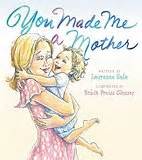 You Made Me a Mother by Laurenne Sala is a celebration of motherhood, from pregnancy through the stages of childhood. In the beginning the mom says, “I felt you. You were a pea. Then a lemon. Then an eggplant.” She walks with other moms and reads pregnancy books, puts up baby furniture with dad.
You Made Me a Mother by Laurenne Sala is a celebration of motherhood, from pregnancy through the stages of childhood. In the beginning the mom says, “I felt you. You were a pea. Then a lemon. Then an eggplant.” She walks with other moms and reads pregnancy books, puts up baby furniture with dad.
